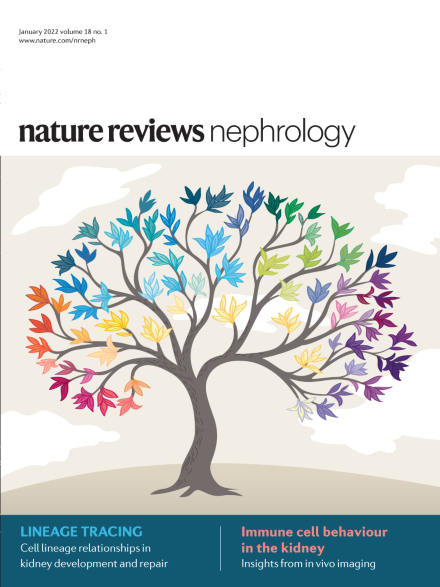成像和空间分辨质谱在肾脏病学中的应用
IF 39.8
1区 医学
Q1 UROLOGY & NEPHROLOGY
引用次数: 0
摘要
空间分辨质谱(MS)和质谱成像方法在研究肾脏生物分子过程中的应用正在迅速增长。这些功能强大的方法可以实现跨组学域(包括代谢物、药物、蛋白质和蛋白质翻译后修饰)的许多分子类别的无标记和多重检测,开始揭示与肾脏健康和疾病相关的新分子见解。肾脏的复杂性往往需要对生物体液、整个器官、功能组织单位、单细胞和亚细胞区室进行多种尺度的分析。各种质谱方法可以产生跨这些空间域的组学数据,并促进肾脏的基础科学和病理评估。与不同MS应用程序的样品制备和处理相关的最佳工艺正在迅速发展。新兴技术和方法、空间分辨率的提高、更广泛的分子表征、多模态和多组学方法以及机器学习和人工智能方法的使用有望使这些应用在肾脏学领域更具价值。总的来说,空间分辨率的质谱和质谱成像方法有可能填补肾脏系统生物学分析中的组学空白,并提供使用基因组学和转录组学方法无法获得的功能输出。本文章由计算机程序翻译,如有差异,请以英文原文为准。


Imaging and spatially resolved mass spectrometry applications in nephrology
The application of spatially resolved mass spectrometry (MS) and MS imaging approaches for studying biomolecular processes in the kidney is rapidly growing. These powerful methods, which enable label-free and multiplexed detection of many molecular classes across omics domains (including metabolites, drugs, proteins and protein post-translational modifications), are beginning to reveal new molecular insights related to kidney health and disease. The complexity of the kidney often necessitates multiple scales of analysis for interrogating biofluids, whole organs, functional tissue units, single cells and subcellular compartments. Various MS methods can generate omics data across these spatial domains and facilitate both basic science and pathological assessment of the kidney. Optimal processes related to sample preparation and handling for different MS applications are rapidly evolving. Emerging technology and methods, improvement of spatial resolution, broader molecular characterization, multimodal and multiomics approaches and the use of machine learning and artificial intelligence approaches promise to make these applications even more valuable in the field of nephology. Overall, spatially resolved MS and MS imaging methods have the potential to fill much of the omics gap in systems biology analysis of the kidney and provide functional outputs that cannot be obtained using genomics and transcriptomic methods. In this Review, the authors discuss mass spectrometry (MS) imaging and spatially resolved MS approaches that are being employed in nephrology applications. They also highlight emerging MS methods and applications, as well as the integration of MS data with data from other omics approaches.
求助全文
通过发布文献求助,成功后即可免费获取论文全文。
去求助
来源期刊

Nature Reviews Nephrology
医学-泌尿学与肾脏学
CiteScore
39.00
自引率
1.20%
发文量
127
审稿时长
6-12 weeks
期刊介绍:
Nature Reviews Nephrology aims to be the premier source of reviews and commentaries for the scientific communities it serves.
It strives to publish authoritative, accessible articles.
Articles are enhanced with clearly understandable figures, tables, and other display items.
Nature Reviews Nephrology publishes Research Highlights, News & Views, Comments, Reviews, Perspectives, and Consensus Statements.
The content is relevant to nephrologists and basic science researchers.
The broad scope of the journal ensures that the work reaches the widest possible audience.
 求助内容:
求助内容: 应助结果提醒方式:
应助结果提醒方式:


